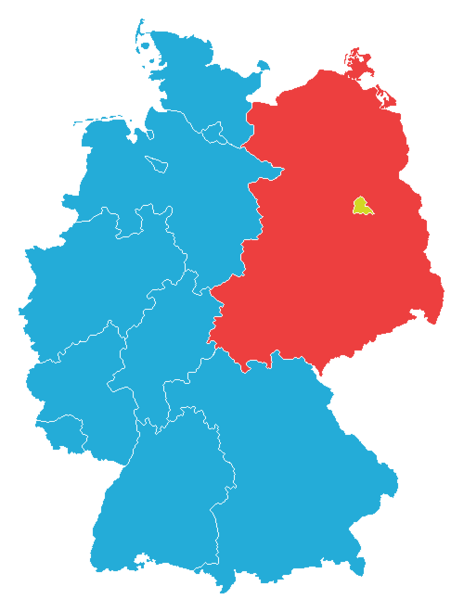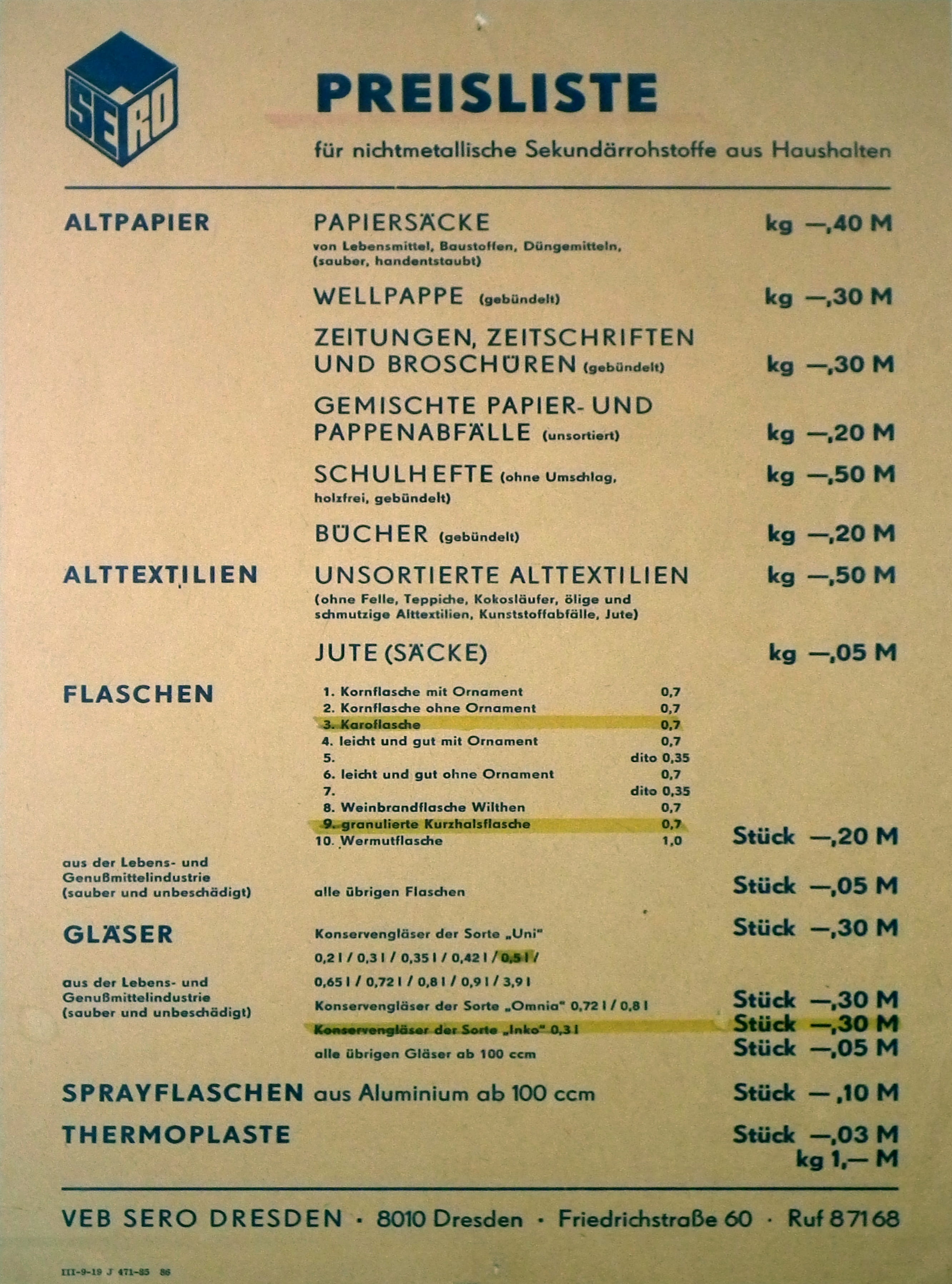A Brief History of Waste Management in Germany
Attempting to write a singular history of waste management in Germany is a flawed pursuit, as is any attempt to vie Germany’s history as just one story. A brief overview for those of you less familiar with German history: following World War II, Germany was split into two separate countries, the German Democratic Republic (eastern Germany) and the Federal Republic of Germany (western Germany). Waste management developed differently in the two countries due predominantly to their economic differences.

This figure illustrates the borders of Germany as they were in 1957, with blue depicting the Federal Republic of Germany and red showing the German Democratic Republic. West Berlin, which belonged to the FRG despite being surrounded by the GDR, is shown in yellow.
For the GDR, importing raw materials from other countries was prohibitively expensive. Recycling was in many ways shown as citizens’ moral duty. On top of this sense of obligation, citizens were also incentivized monetarily through the SERO system. This system allowed citizens to hand in paper, fabric, glass, and other recyclable material in exchange for compensation. Many children used this as a way to earn to spending money. Interestingly, east German households during this time did produce less waste than their west German counterparts. Contributing this purely to recycling programs though would overlook the economic situations of the countries, which likely led to less consumption in the GDR overall.
While recycling programs in the GDR were advanced for their time, waste disposal was not. Many landfills in the GDR were subpar and responsible for the contamination of rivers and drinking water. This was exacerbated by the fact that many countries, including west Germany, exported their waste to the GDR in return for hard currency.

This SERO price list shows the amount of money East German citizens could earn by recycling different types of materials. Often this was done by school children to earn pocket money, as it could be a quite lucrative endeavor.
In western Germany, waste management laws were much more varied during this time, as states made their own guidelines. It was not until 1972 that a single national law regarding waste management in western Germany was created. While this law and its guidelines have been altered over time, it still essentially exists as it has since 1972, with the major difference being that since reunification it has applied to both eastern and western Germany.
Since 1972, Germany’s waste management system has shifted its focus from the disposal of waste to the prevention of waste. One of the many effects of this has been the expansion and improvement of Germany’s recycling programs. This is perhaps most visible through the mandatory separation of various types of waste. Since 2015, according to the Waste Management Act, it has been required that paper, glass, plastic and household organic waste be picked up separately so that they can be efficiently disposed of.
Given that eastern Germany had been collecting recyclable items separately prior to German reunification, it seems odd that this wasn’t required in reunified Germany until 2015. The main argument given for this is that the program was too expensive to run within the economic conditions of reunified Germany. However, western feelings of superiority may also have contributed to the death of this program. I hope to discuss the politics of waste management, including those faced by Germany during reunification, in a later blog post.
Ultimately, the process by which waste management guidelines have been created in Germany does not seem so different than that in the US. Essentially, the federal government sets the bare minimum for various things such as how waste needs to be collected and how landfills should be maintained. It also funds various educational programs. In turn, each municipality conforms to these guidelines and has the opportunity to set more rigorous regulations for itself. As the federal guidelines set a rather low bar, it is not completely clear what has motivated municipalities to go above and beyond the requirements.